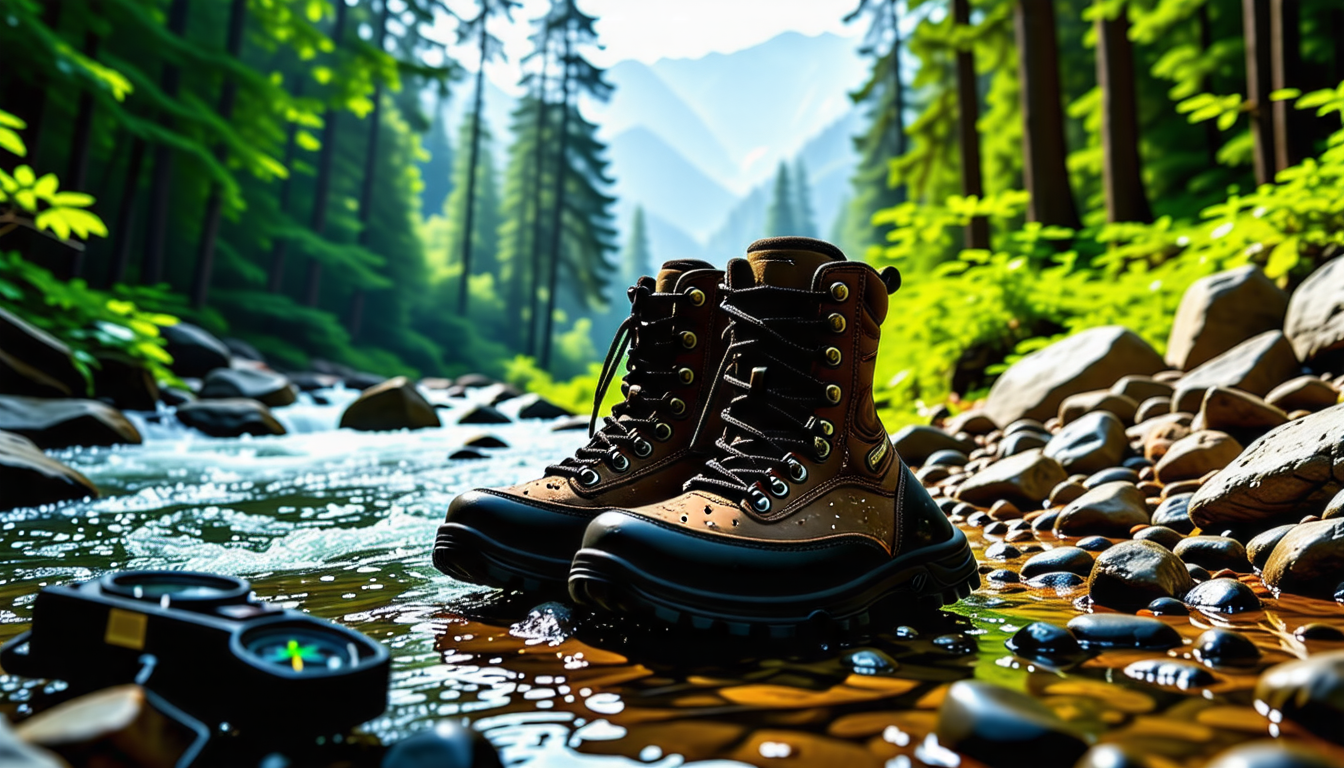|
IN BRIEF
|
Embarking on a trail running adventure is not just about the thrill of the chase; it’s about being equipped for every twist and turn that nature throws your way. To make the most of your journey, having the right gear is crucial. Whether you’re a seasoned pro or a curious beginner, understanding what essentials to pack can enhance your experience and protect you from unforeseen challenges. Imagine gliding through the wilderness with shoes that grip the earth like a second skin, and clothing that wicks away moisture while keeping you comfortable. From trail running shoes to breathable layers, each piece of equipment plays a significant role in your performance. Let’s delve into the must-have items that can transform your trail running escapades into unforgettable memories.
Essential Trail Running Gear
Trail running offers an exhilarating escape from the bustling urban environment, immersing you in nature’s beauty. Yet, to truly enjoy this experience, it’s crucial to equip yourself with the right gear. Ensuring you have the necessary equipment not only enhances comfort but also boosts performance and safety. Here’s a detailed look at what you need for an enjoyable trail running adventure.
Footwear: The Foundation of Your Run
Your choice of trail running shoes can make all the difference in your performance. Unlike regular running shoes, trail shoes are designed specifically for rugged terrain; they offer enhanced traction, stability, and protection against environmental obstacles. Opt for shoes with deep lugs in the outsole to provide excellent grip on uneven surfaces. Additionally, consider your foot shape and choose shoes that complement your natural structure.
Besides shoes, your choice of socks should not be overlooked. A high-quality pair of merino wool socks can help regulate temperature and wick moisture, keeping your feet dry and blister-free. This combination is essential, especially during long runs where comfort is crucial.
Clothing: Dressing for Success
Top Layer Considerations
The base layer you choose impacts your overall comfort during the run. Look for lightweight, wicking fabrics that draw sweat away from your skin, maintaining a comfortable body temperature. T-shirts made from synthetic materials or merino wool are great options. In cooler conditions, lightweight long-sleeved options can provide added warmth while still allowing your body to breathe.
Bottom Layers
Your selection of shorts or tights should prioritize comfort and flexibility. Many runners prefer shorts for warmer conditions, while tights are ideal for cooler weather. Look for options with moisture-wicking properties and ensure the fit allows for a full range of motion. Additionally, some brands offer built-in compression that can enhance blood circulation and reduce fatigue.
Outerwear
Weather can change unexpectedly on the trails, making a reliable jacket essential. A lightweight, waterproof jacket will shelter you from rain and wind, while still being breathable enough to prevent overheating. Consider a packable option that you can easily store when not in use. Some jackets also come with reflective elements for added safety during low-light conditions.
Nutrition and Hydration: Staying Energized
When it comes to trail running, your body needs fuel. Carrying enough water and nutrition along the way is crucial. A hydration vest or belt allows you to carry water comfortably without additional weight. It’s essential to choose a system that fits snugly without bouncing during your run.
In addition to hydration, consider packing sports gels, energy bars, or dried fruits in your pockets to maintain your energy levels. Planning your nutrition around the distance of your run can ensure you stay energized throughout your adventure.
Safety Equipment: Be Prepared
Safety should always be a priority when trail running. Carrying a first aid kit can prepare you for minor injuries or emergencies. This kit should include essentials such as adhesive bandages, antiseptic wipes, and pain relievers. Familiarize yourself with how to use the items in your kit before hitting the trails.
It’s also wise to have a light source if you are running in the early morning or late evening. A compact headlamp or a handheld flashlight can keep you visible and help you see obstacles in your path.
Navigational Tools: Finding Your Way
Getting lost in the wilderness can turn an enjoyable run into a troublesome situation. Use a map and compass as your primary navigational aids, or consider downloading trail maps on your smartphone for additional guidance. Familiarizing yourself with the trails beforehand is crucial. Many trail running communities share experiences and details about the best routes, providing valuable insight into which trails suit different skill levels. Websites like Reddit Trail Running offer a plethora of suggestions and advice.
Accessories: The Little Things Matter
Accessories may seem small, but they can significantly enhance your trail running experience. A good hat can shield your eyes from the sun while a pair of sunglasses prevents glare from affecting your vision. Choose options that fit securely and do not slip while you’re in motion.
Additionally, consider bringing a watch or GPS device that tracks your distance and pace. Monitoring your progress can keep you motivated and help you manage your energy levels during longer runs. It also adds a layer of safety, allowing loved ones to track your location if needed.
Essential Gear for Varying Conditions
Trail running can be a diverse experience depending on the weather and terrain. Adapting your gear accordingly can define a successful adventure. In warm weather, consider lightweight clothing that promotes airflow. For colder climates, layering becomes essential. A merino wool base layer, insulated mid-layer, and a waterproof outer layer can keep you warm and dry.
During rainy conditions, you can’t go wrong with waterproof footwear and gear. Look for shoes with superior grip to handle muddy and slippery trails effectively. It’s essential to remain comfortable and safe in varying weather.
Maximizing Performance Through Technique
Having the right gear is essential, but understanding how to effectively use it can maximize your performance. Employing techniques such as the 80/20 rule in training can lead to significant improvements. This principle suggests that 80% of your runs should be at an easy, conversational pace, while 20% should include higher intensity intervals.
Moreover, practicing your hydration and nutrition strategy during the training phase can help you identify what works best for your body. Testing your gear and technique during training runs prepares you for the race or your longer hikes in the wilderness.
Conclusion: Your Trail Awaits
Equipping yourself with the essential gear for trail running sets the foundation for a successful and enjoyable experience. It’s a commitment to your performance, safety, and overall enjoyment of the trails. Understanding each element of your gear, from shoes to accessories, can enhance your overall experience and ensure every run is a step towards your personal goals.
When embarking on an exhilarating trail-running adventure, having the right gear is crucial to ensure both performance and safety. First and foremost, investing in a quality pair of trail running shoes is essential. These shoes provide the necessary grip and support needed for uneven terrain, significantly reducing the risk of injuries. Look for options that prioritize breathability and lightweight materials to keep your feet comfortable during longer runs.
Next, your choice of clothing plays a vital role. Opt for wicking, quick-dry fabric materials, such as synthetic blends or merino wool. A breathable t-shirt and moisture-wicking shorts or tights will help regulate body temperature. For those chilly mornings or unexpected weather changes, pack a lightweight jacket that offers wind resistance and water protection.
Hydration is paramount, especially on long trails. Carry a hydration vest or belt that allows easy access to fluids without slowing your pace. Consider bringing along a first aid kit and a reliable source of nutrition, such as energy gels or bars, to keep your energy levels up during the run. Lastly, always familiarize yourself with the trail by studying a map or having a reliable GPS device on hand. Being well-prepared ensures that your trail running experience is nothing short of fantastic.
Embarking on a trail running adventure requires the right gear to ensure not only safety but also an enjoyable experience. Essential items include quality trail running shoes designed for grip and durability, along with moisture-wicking clothing that keeps you comfortable regardless of the weather. Don’t forget the importance of hydration, so a reliable hydration pack is a must for keeping your energy levels high. Accessories like a first aid kit and a good map will help you navigate and stay safe on unfamiliar paths. Finally, remember to pack some nutritious snacks to fuel your journey. With the right equipment, you can conquer the trails and enjoy every moment of your exhilarating runs!
FAQ
What are the must-have items for trail running?
R: Essential items include trail running shoes, moisture-wicking clothing, a hydration pack, and a first aid kit. These essentials ensure comfort, safety, and hydration during your runs.
How should I choose my trail running shoes?
R: Look for trail running shoes with a good grip, proper fit, and adequate cushioning. It’s important to try on several pairs to find ones that provide support and stability for your foot type.
What should I wear in different weather conditions?
R: In warm weather, opt for lightweight, breathable fabrics. For cooler temperatures, include thermal layers, a waterproof jacket, and sturdy tights to keep warm. Always adapt to the weather to enhance your performance.
How do I stay hydrated while trail running?
R: Use a hydration vest or belt to carry fluids. Ensure you drink regularly, especially on long runs. Hydration packs with built-in bladders can hold enough water and allow for easy access while you run.
What nutritional items should I carry during my run?
R: Pack energy gels, snacks like bars or trail mix, and electrolyte tablets. These will help maintain your energy levels and keep you fueled throughout your adventure on the trails.

